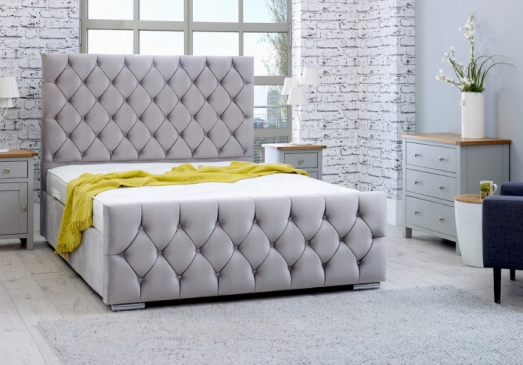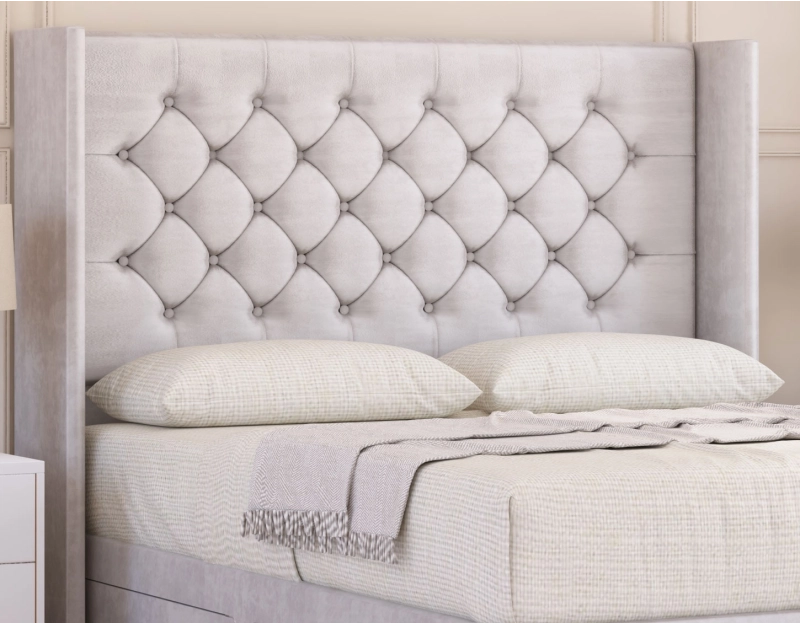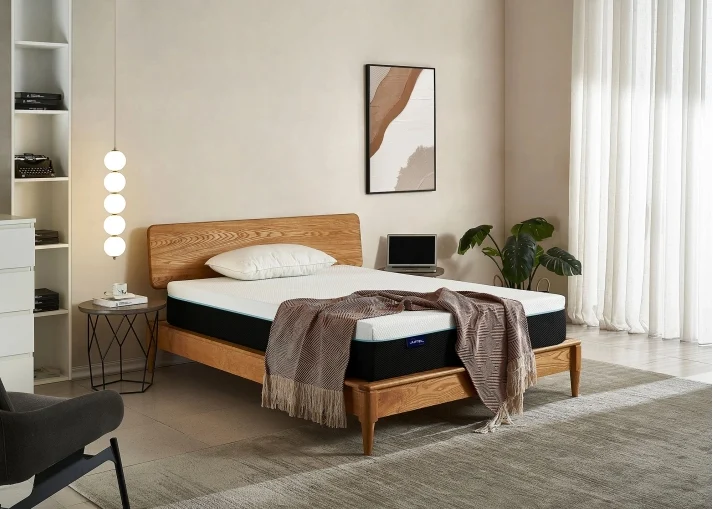- Inspiration & Ideas
- 0 likes
- 7826 views
When it comes to getting a good night's sleep, the position you find yourself in every night might be more important than you think. Have you ever wondered why some mornings you wake up feeling refreshed and energetic, while on other days you’re greeted by stubborn neck and back pains? The answer often lies in your sleep position and the mattress you choose to support it.
Just as each person has their unique sleep style, so too does each sleep position require a specific type of mattress to ensure optimal comfort and support throughout the night. Understanding this connection can be the key to unlocking restful, rejuvenating sleep.
A good mattress is not just a purchase; it's an investment in your health, well-being, and quality of life. The right mattress can significantly improve sleep quality by aligning your spine, reducing pressure points, and providing the support your body needs to relax fully. Conversely, the wrong mattress can contribute to restless nights, chronic pain, and even long-term health issues such as poor posture and aggravated conditions like arthritis.
When you learn that we spend roughly one-third of our lives sleeping, it's clear that choosing the right mattress is a decision that deserves thoughtful consideration.

Understanding The Sleep Positions
Everyone has a preferred sleep position, one that they naturally settle into each night without even thinking about it. This position can be influenced by several factors, including comfort preferences, health concerns, and even personality traits. Understanding these positions and their unique characteristics is the first step toward choosing a mattress that will provide you with the best support and comfort.
Side Sleeping
Side sleeping is the most common sleep position, with approximately 60% of adults favouring it. Sleeping on your side can be incredibly beneficial for spine alignment, as it allows the spine to rest in its natural curvature. This position is particularly popular among pregnant women and individuals who suffer from sleep apnea or acid reflux, as it can help alleviate these conditions.
Back Sleeping
Back sleeping is often regarded as one of the healthiest positions for spinal alignment, as it allows the back, neck, and head to rest in a neutral position without undue pressure. This position can also help minimise wrinkles and skin breakouts since your face isn’t pressed against the pillow all night.
Stomach Sleeping
Stomach sleeping is a position that, for many, feels instinctively comforting and cozy, reminiscent of being swaddled in a snug embrace. This position, often referred to as prone sleeping, involves lying flat on the stomach with the head turned to one side. While it may provide a sense of security and comfort for some, it's essential to understand the implications it can have on the body.
How Sleep Positions Affect Health and Comfort
Sleep is one of the most important aspects of our daily lives, yet it often goes overlooked in its complexity and significance. It’s not just about the amount of sleep you get but also about the quality of that sleep. Surprisingly, the position in which we sleep plays a crucial role in determining both our comfort and overall health. From back sleepers to side snoozers, each position has its unique benefits and drawbacks. Understanding these can help us make better choices about how we rest, ultimately leading to improved health and well-being.
The Back Sleeper
Sleeping on your back is often considered one of the healthiest positions. When you lie on your back, your weight is evenly distributed across your skeletal frame, minimizing pressure points that could lead to discomfort or pain. This position also keeps your spine aligned and can prevent unnecessary strain on your neck and back. For those who suffer from acid reflux, back sleeping with a slightly elevated head can alleviate symptoms by keeping the stomach below the esophagus, reducing the likelihood of stomach acid rising during the night.
However, back sleeping isn't without its downsides. Individuals who are prone to snoring or who suffer from sleep apnea may find this position exacerbates their conditions. The tongue can fall back into the throat, partially obstructing the airway and leading to snoring or breathing interruptions. To mitigate this, back sleepers can consider using a pillow that offers proper neck support or try slightly elevating the head to maintain an open airway throughout the night.
The Side Sleeper
Side sleeping is another popular position that offers its own set of benefits. Many people find comfort in this position, often curling up in the fetal position, which can create a sense of safety and warmth. For pregnant women, side sleeping—particularly on the left side—can improve blood flow and reduce pressure on the liver, making it the recommended position during pregnancy. Additionally, side sleeping can help reduce snoring and sleep apnea since the airway remains more open compared to back sleeping.
However, side sleeping is not without its challenges. Over time, resting on one side can lead to shoulder and hip discomfort due to the pressure placed on those areas. It may also contribute to the development of wrinkles, as one side of the face is pressed against the pillow for extended periods. To counter these issues, side sleepers can benefit from using a supportive mattress and pillows that help align the spine and reduce pressure on the hips and shoulders. A body pillow can also provide additional support and help maintain the alignment of the hips and spine.
The Stomach Sleeper
Stomach sleeping is less common, yet it remains the preferred choice for some. For those who snore or suffer from sleep apnea, this position can be beneficial because it naturally keeps the airways open. However, sleeping on the stomach presents significant drawbacks that often outweigh the benefits. The primary concern is the strain placed on the neck and spine, as turning the head to the side for extended periods can lead to misalignment and discomfort. This position also flattens the natural curve of the spine, leading to lower back pain.
Given these potential issues, stomach sleepers should consider ways to modify their position. Using a very thin pillow—or no pillow at all—can help reduce neck strain, while placing a pillow under the pelvis can support the lower back and maintain the spine’s natural curve. Transitioning away from stomach sleeping to a side or back position may ultimately provide more health benefits and comfort in the long run.

When shopping for a new mattress, it can be overwhelming to navigate the many options available. However, by focusing on a few key factors, you can simplify the decision-making process and select a mattress that provides the comfort and support you need for restful sleep. These factors include support, firmness, pressure relief, and material types.
Support refers to a mattress's ability to maintain proper spinal alignment and evenly distribute body weight while you sleep. A supportive mattress ensures that your spine retains its natural curvature, preventing sagging and reducing the risk of developing back pain or discomfort. Proper support is essential for promoting healthy sleep posture, allowing your muscles to relax and recover fully overnight.
- Side Sleepers: Support for side sleepers involves providing adequate cushioning around the shoulders and hips while keeping the spine aligned. A mattress with zoned support or softer materials can help alleviate pressure points, preventing discomfort and enhancing spinal alignment.
- Back Sleepers: For back sleepers, a mattress should support the natural curve of the spine, especially the lumbar region, to prevent sagging. Medium-firm mattresses are generally recommended for back sleepers, as they provide the balance between comfort and support needed to maintain proper alignment.
- Stomach Sleepers: Stomach sleepers require a firmer mattress to prevent the hips and abdomen from sinking too deeply, which can cause an unnatural curve in the spine. Proper support ensures the spine remains in a neutral position, reducing the risk of strain and pain.
Why Pressure Relief is Crucial for Comfort
Pressure relief is essential for comfort and pain prevention during sleep. A mattress with good pressure relief can distribute body weight evenly, minimising pressure points that can cause discomfort and disrupt sleep. This is especially important for individuals with specific pain issues, such as arthritis or joint problems, as a lack of pressure relief can exacerbate these conditions.
Areas of Concern for Different Sleep Positions
- Side Sleepers: Side sleepers often experience pressure build-up in the shoulders and hips. A mattress that contours to the body's shape can help alleviate these pressure points, providing a more comfortable sleep experience.
- Back Sleepers: While back sleepers generally have fewer pressure point issues, a mattress that distributes weight evenly across the body can help avoid localised pressure on the spine and hips.
- Stomach Sleepers: Stomach sleepers may experience pressure in the chest and knees. A mattress with adequate support and firmness can help minimise pressure on these areas and promote better alignment.
Overview of Mattress Materials
The material composition of a mattress plays a significant role in its performance, affecting factors such as support, firmness, and pressure relief. Here’s an overview of the most common mattress materials and their characteristics:
- Memory Foam
- Pros: Memory foam mattresses are known for their excellent pressure relief and contouring properties, as they conform closely to the body and distribute weight evenly. They can be beneficial for side sleepers, who need extra cushioning around the shoulders and hips.
- Cons: Memory foam tends to retain heat, which can lead to discomfort for those who sleep hot. Some people also find the sinking sensation of memory foam sometimes too restrictive.
- Latex
- Pros: Latex mattresses offer a responsive feel with moderate contouring and good support. They are durable and naturally resistant to allergens, making them a good choice for allergy sufferers.
- Cons: Latex can be more expensive than other materials, and its bouncy feel may not appeal to those who prefer a softer surface.
- Pocket Sprung
- Pros: Pocket Sprung mattresses are characterised by their coil support systems, providing a firm and supportive sleep surface. They offer good airflow, which helps regulate temperature, and are typically more affordable.
- Cons: Pocket spring mattresses may lack the contouring capabilities needed for pressure relief, especially for side sleepers, leading to potential discomfort.
- Open Coil Mattress
- Pros: Open coil mattresses are generally cheaper than other types, such as pocket sprung mattresses, making them a budget-friendly option for many consumers. They are also lighter than pocket sprung options, making them easier to move and handle.
- Cons: While they provide adequate support, open coil mattresses may lack the refined comfort and targeted support found in pocket sprung mattresses, which can adapt better to body contours.
Choosing the right mattress involves considering these key factors and how they relate to your individual sleep position and preferences. By understanding the nuances of support, firmness, pressure relief, and material types, you can make an informed decision that enhances your sleep quality and overall well-being.
In this guide, we have explored the critical role that sleep positions play in choosing the right mattress and how this choice can significantly impact your overall health and well-being. By understanding the importance of support, firmness, pressure relief, and material types, you can make a more informed decision when selecting a mattress that aligns with your specific sleep needs. Each sleep position—whether side, back, or stomach—comes with unique requirements to ensure comfort and proper spinal
Improve Your Sleep With A New Mattress From Sloomy
At Sloomy, we get that good sleep is super important for staying healthy and happy. That’s why we’ve put so much effort into making mattresses that fit your needs, ensuring you wake up feeling refreshed and ready to go. We hope that this guide will help you better understand the importance of your sleep position, and how a new mattress which perfectly fits your sleep style can help.
.jpg)









